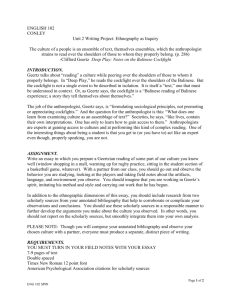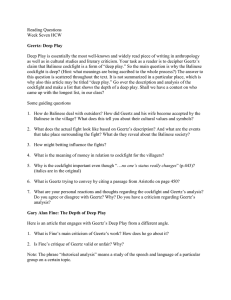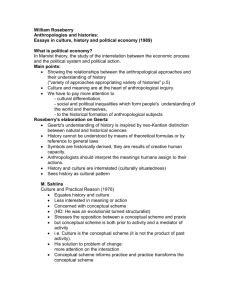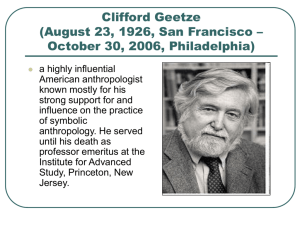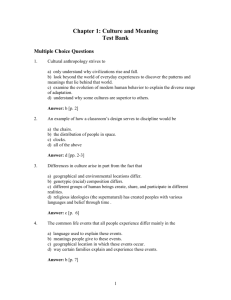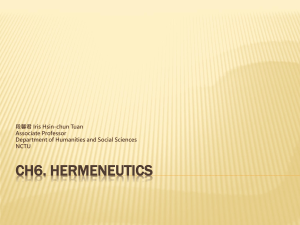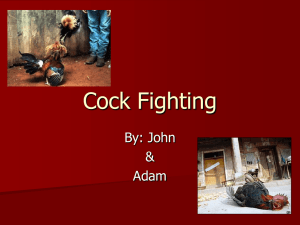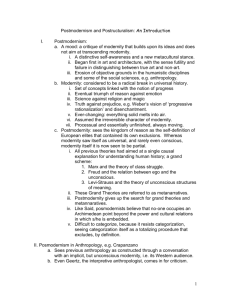Geertz passages on meaning making - engl102-raymond
advertisement
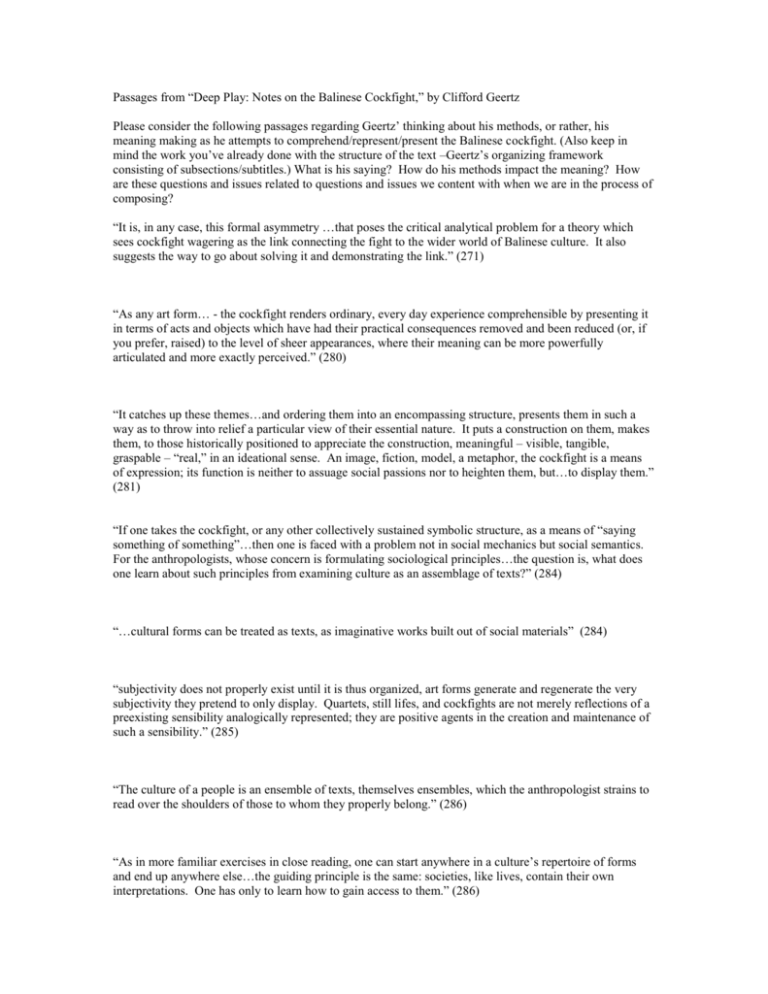
Passages from “Deep Play: Notes on the Balinese Cockfight,” by Clifford Geertz Please consider the following passages regarding Geertz’ thinking about his methods, or rather, his meaning making as he attempts to comprehend/represent/present the Balinese cockfight. (Also keep in mind the work you’ve already done with the structure of the text –Geertz’s organizing framework consisting of subsections/subtitles.) What is his saying? How do his methods impact the meaning? How are these questions and issues related to questions and issues we content with when we are in the process of composing? “It is, in any case, this formal asymmetry …that poses the critical analytical problem for a theory which sees cockfight wagering as the link connecting the fight to the wider world of Balinese culture. It also suggests the way to go about solving it and demonstrating the link.” (271) “As any art form… - the cockfight renders ordinary, every day experience comprehensible by presenting it in terms of acts and objects which have had their practical consequences removed and been reduced (or, if you prefer, raised) to the level of sheer appearances, where their meaning can be more powerfully articulated and more exactly perceived.” (280) “It catches up these themes…and ordering them into an encompassing structure, presents them in such a way as to throw into relief a particular view of their essential nature. It puts a construction on them, makes them, to those historically positioned to appreciate the construction, meaningful – visible, tangible, graspable – “real,” in an ideational sense. An image, fiction, model, a metaphor, the cockfight is a means of expression; its function is neither to assuage social passions nor to heighten them, but…to display them.” (281) “If one takes the cockfight, or any other collectively sustained symbolic structure, as a means of “saying something of something”…then one is faced with a problem not in social mechanics but social semantics. For the anthropologists, whose concern is formulating sociological principles…the question is, what does one learn about such principles from examining culture as an assemblage of texts?” (284) “…cultural forms can be treated as texts, as imaginative works built out of social materials” (284) “subjectivity does not properly exist until it is thus organized, art forms generate and regenerate the very subjectivity they pretend to only display. Quartets, still lifes, and cockfights are not merely reflections of a preexisting sensibility analogically represented; they are positive agents in the creation and maintenance of such a sensibility.” (285) “The culture of a people is an ensemble of texts, themselves ensembles, which the anthropologist strains to read over the shoulders of those to whom they properly belong.” (286) “As in more familiar exercises in close reading, one can start anywhere in a culture’s repertoire of forms and end up anywhere else…the guiding principle is the same: societies, like lives, contain their own interpretations. One has only to learn how to gain access to them.” (286)
